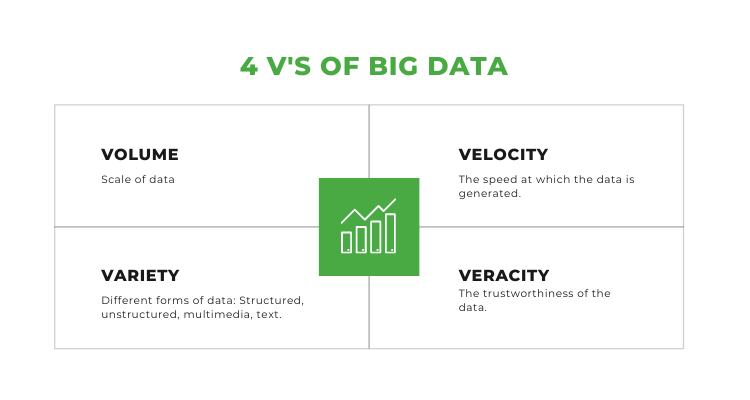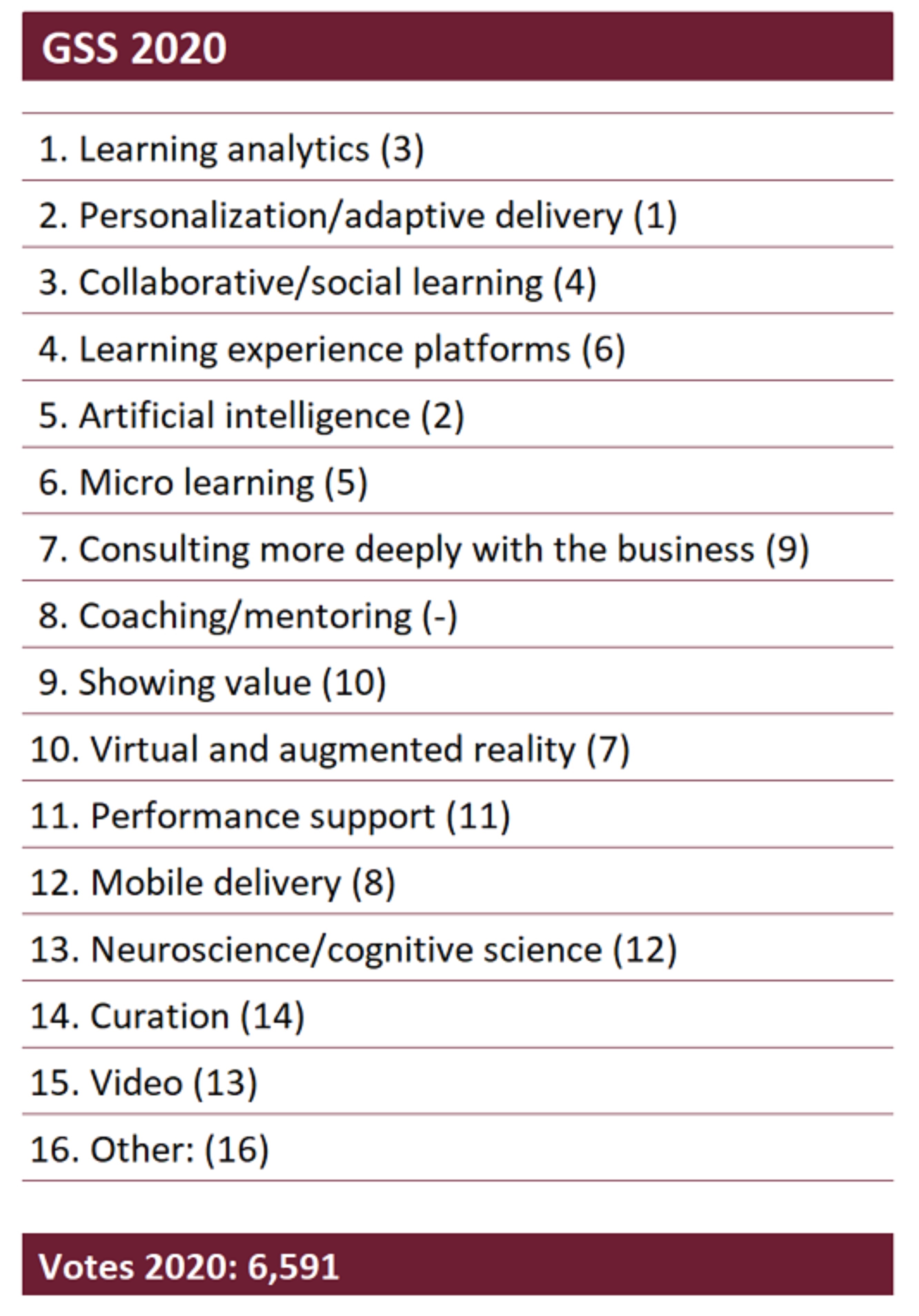Traditional LMS's are a major limitation on the amount of data to be analyzed for decision-making. However, thanks to technological advances, companies now have a unique opportunity to improve their eLearning programs and the learning experience of their employees.
Enter the world of Big Data.
The use of Big Data allows you to get an unparalleled perspective on the performance of each employee, their difficulties, and what attracts them most, among other things.
In this article we will explain what Big Data is, what its benefits are, and how it can be used in eLearning, to maximize the impact of your training programs.
What is Big Data?
Big Data is understood as the massive analysis of data, both structured and unstructured, and in all its possible combinations, that flow within a company. Beyond the large volume of data that Big Data collects, the most important thing is the decisions and actions that companies can make with this information.

Big Data in eLearning: Learning Analytics
Within the universe of online learning and eLearning, the use of Big Data is called Learning Analytics and offers a fabulous opportunity to improve the learning experience. By implementing this technology, there are three basic processes that make Big Data an indispensable tool for any company looking to train employees online.
Let's see what they consist of:
- Data collection: Through the joint work of xAPI and LRS technologies, data from the eLearning course is collected in one place for further analysis and to maximize learning. Also read: LMS vs. LRS: How and Why They're Different
- Data processing and enrichment: Broadly speaking, the LRS database answers the question "who does what?" This data can be supplemented by additional databases that provide more on the "who" and "what". Even depending on the ecosystem, it is possible to incorporate the clickstream of users, their geolocation data, or even cross-reference this learning data with business data (from a CRM, for example). Also read: 5 Reasons Why Your Company Needs a Learning Record Store (LRS)
- Data analysis: The data collected, processed, and enriched at various levels is clearly and completely visualized, ready to perform a descriptive, predictive, and prescriptive analysis. Using the right software, you will be able to final all data in one centralized location. This way, you'll have the power to track employee progress and get insights into their habits and behaviors.
Benefits of Big Data in eLearning
More powerful ways to collect, process and analyze data enable learning leaders to better track the user experience so that we’re not just analyzing if a student marked the right answers at the end of a course. Big Daya opens new opportunities to track the student journey, from where they are taking it (device), to where they might have gotten stuck and how effectively they applied the knowledge.
Some of the main benefits offered by Big Data to training and development professionals are the following:
- It helps you understand problems: The more you get a clear picture of a pattern, the more you will be able to learn from it. For example, if you’re seeing completion rates decline. With big data, you have the context and necessary evidence to identify exactly where, when, and how your completion rates are changing. Most notably, data can help you locate specific areas of the course that require adjustments.
- Specific information: You get access to data about the types of devices used to take a course and the types of browsers and operating systems used.
- User preferences: It allows you to quickly determine which courses, modules, or sections of a course are the most popular amongst your audience.
- Analyze patterns and adapt quickly: By identifying patterns, you can develop new courses, instructional strategies, and delivery methods to give employees content that meets their expectations. You will quickly understand how employees assimilate the content of a course and adapt accordingly.
- Saves time: Big Data analysis allows you to evaluate employee performance quickly.
With this information, it is possible to adjust eLearning programs immediately, making them more attractive and effective.
Recommended read: 4 Tips on How to Convert Long-Form eLearning Courses to Micro Lessons
Learning Analytics: the number one priority in training and development in 2020
From the question: What will be the main ten trends in relation to training and development in the workplace?
The L&D Global Sentiment 2020 reported, for the first time since 2015, the leading position on the survey was Learning Analytics. This indicates that measurement capabilities for decision-making are increasingly recognized and a priority, according to learning specialists around the world.

Turning Learning Analytics into actionable outcomes
Understanding the importance of Big Data is not the same as putting it into practice. For the data collected from Learning Analytics to be useful, it must be converted into actionable results, following these steps:
- Data analysis: It involves the collection and reporting of data, for which the use of visualizations is recommended. The most relevant data are those that refer to the level of participation and performance of each employee.
- Analysis of trends / patterns from the reports: It is possible to make multiple comparisons: from the activity of an employee with others of the same program, with those who have taken the course before, etc. The greater the volume of data collected, the better patterns for improving learning will be found.
- Action: From the above analysis, you can predict the results of the course and even modify it to make it more entertaining. In addition, different types of resources or evaluations can be included, and personalized interventions can be made to enhance the performance of each employee.
Also read: How Artificial Intelligence is Transforming the eLearning Industry
Any organization that teaches eLearning courses has the potential to collect and use Big Data. The key is not to create an immense volume of data, but in what this data says, to strategically guide each course or towards improvements in its quality, generating a greater impact on employees.
Th SHIFT Ecosystem makes storing and managing data quick and easy. With visual dashboards and powerful tracking, you can have complete visibility to better understand your employees performance.
Want to get started for free? Sign up for the free trial today!







